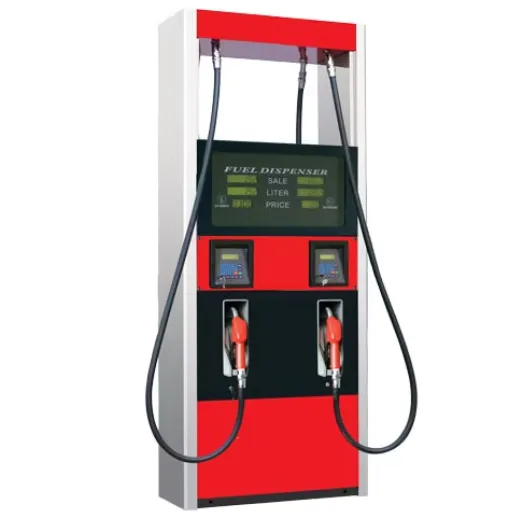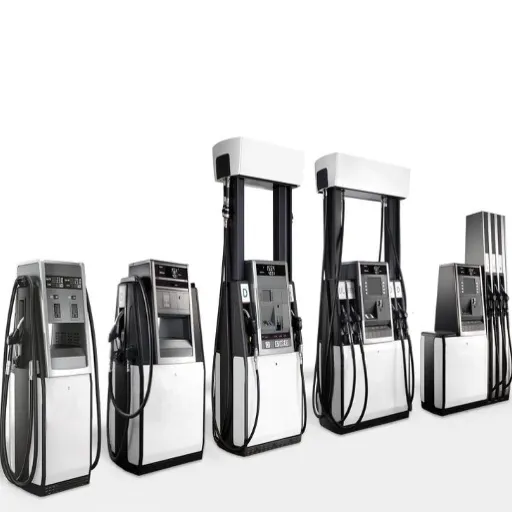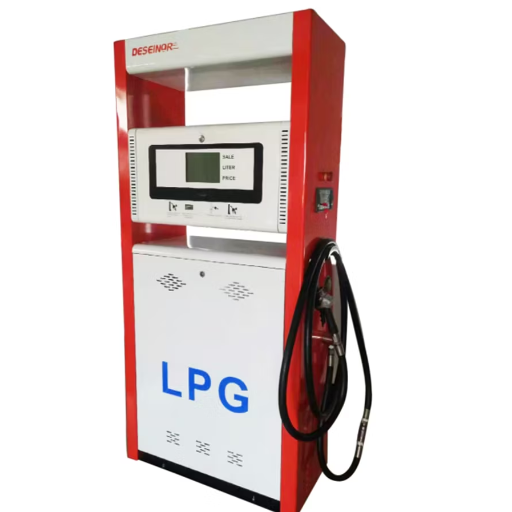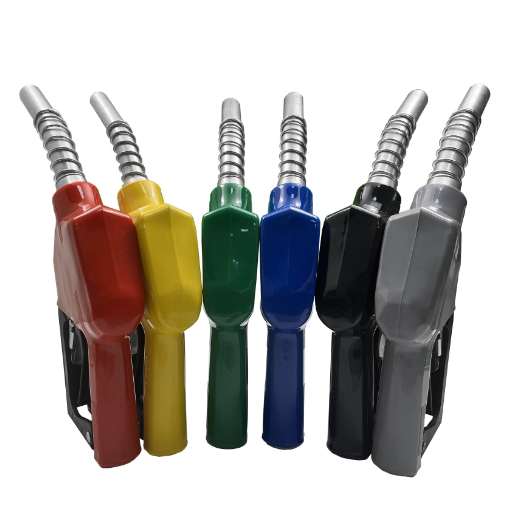Gasoline dispensing might seem like an easy thing to do every day. Still, when done improperly, safety hazards might arise, environmental damage may ensue, or even costly mistakes may occur. That knowledge is essential whether you are still obtaining your driver’s license, someone who has been on the road for many years, or someone needing a good refresher course on handling gasoline. This guide shall walk you through everything you need to know, with safety measures given paramount importance along with efficiency and environmental responsibility. After reading this article, you will hold the newfound power of practical tips and expert advice, which will help you get it right whenever dispensing gasoline.
What is the Proper Way to Dispense Gasoline?

Safety is considered paramount when dispensing gasoline correctly. The place must be well-ventilated, and never smoke or light a flame nearby. When fueling, turn off the engine and discharge static electricity to ground yourself while touching someone’s car. Next, insert the nozzle firmly into the tank and choose the right fuel grade for your vehicle. Hold the nozzle, ensuring the pump goes off automatically when the tank is filled to prevent overfilling or any spill. Then, place the gas cap tightly and keep some cleaners within reach for spills. Safety, efficiency, and environmental awareness will result from following this procedure.
Understanding the Dispense System
Modern fuel dispensing systems incorporate state-of-the-art technology, ensuring safety, efficiency, and environmental compatibility. The systems operate through highly advanced mechanisms involving fuel flow meters, nozzles with automatic shut-off, and vapor recovery.
Fuel flow meters are essential since they measure the amount of dispensed fuel. A sound meter ensures precise fuel delivery to limit wastage and charge the customer exactly what is due. Most of these systems are calibrated to work with a minimum margin of error of ±0.3% so that they can be entirely relied upon in all transactions.
Another key piece of equipment is the nozzle, which is equipped with automatic shut-off features to prevent overfilling and spilling. The nozzle sensing does this so that the fuel has reached the fill line in the tank and immediately shuts off the flow. Further, many modern ones have the vapor recovery system integrated, which helps to recover fuel vapors during refueling and curb their emission into the atmosphere as one of the environmental concerns.
Payment and monitoring technologies are also integrated with the system for a seamless experience. Contactless payment systems and digital interfaces offer convenience to the customer, while real-time monitoring ensures the system runs efficiently and within safety parameters. Such introductions are a big step forward in providing safety, protecting the environment, and satisfying customers.
Key Equipment Needed for Safe Dispensing
Dispensing Pumps and Valves: Insulin pumps, soap dispensers, and even the valves in big manufacturing lines—nothing flows right without the right parts. Good pumps put out the exact amount every time, save leftover liquid, and stop messy spills before they start.
Safety Cabinets and Containment Systems: Hazardous chemicals need a home, and a sturdy safety cabinet is just that home. The steel shelves catch any drip, the double walls hold back a small fire, and everything inside stays where it belongs until someone opens the door.
Personal Protective Equipment (PPE): Goggles, gloves, and a thick lab coat look ordinary, but they’re a worker’s first line of defense. If the liquid jumps or a cloud forms, the proper PPE keeps dangerous stuff off skin, eyes, and lungs.
Leak Detection and Monitoring Systems: Modern plants dont wait for the janitor to spot a puddle. Sensors and blinking dashboards shout at operators when a line drools or a tank tilts, giving people seconds, not minutes, to fix the problem.
Labeling and Warning Signage: Black letters on a white tag tell you what chemical is inside before you even lift the lid, and a bright skull symbol reminds you why that matters. Good labels stop mistakes, quick signs keep everyone alert, and together they let the job move safely along.
Steps to Dispense Gasoline Safely
Turn Off Your Engine: Always kill the ignition before you touch the pump. An idling engine can spark or heat up; nobody needs that surprise.
Forget Cigarettes and Flames: Put out cigarettes, lighters, and even birthday candles. Gas fumes dance through the air and catch fire faster than you can blink.
Zapper Static Shock: Rub your shoe on the pavement, then grab a metal part under the hood. That quick touch drains any invisible zap that might light a blaze.
Seat the Nozzle Firmly: Slide it into the tank until it clicks once or twice. A loose fit leaks gas and ruins your shoes.
Pick the Right Grade: Scan the door jamb or owner’s manual for fuel recommendations. Premium in a regular engine is a waste; regular in a performance car can knock.
Stop When the Pump Clicks: Most dispensers are smart enough to shut off. Pumping past that point turns your tank into a fountain.
Twist the Cap Tight: Give the fuel cap a half-turn or until you hear the reassuring click. A loose lid lets fumes escape, turning your driveway into an odor zone.
These simple steps cut down spills, save money, and keep the air cleaner for everyone.
How Does a Gasoline Pump Work?

Gasoline is pumped into a vehicle from an underground storage tank. When a person lifts the nozzle, activating the pump in the system, the gas is pumped by a motor-driven pump from the underground storage tank through the pipes and the dispensing hose. A flow control valve controls the speed of the fuel, ensuring a steady flow appropriate for operational safety. The nozzle has a sensor that detects a full fuel tank and automatically stops the fuel flow to avoid flooding. This way, the gasoline is safely and efficiently transferred into the vehicle.
The Principle Behind Pump Operation
A gasoline fuel pump operates on fluid dynamics and mechanical engineering principles to deliver gasoline efficiently. Modern pumps, either submersible or suction types, use a motor-driven gear pump or a vane pump to draw the fuel from the storage tank. A typical submersible pump, for example, can give a flow of around 10 gallons per minute, sufficient to refill efficiently while ensuring safety standards.
Critical elements such as the motors, impellers, and valves require synchrony to maintain pressure and flow. These advanced systems now use electronic monitoring for tight control. Sensors control flow rates and pressure to suit the vehicle’s requirements, while safety features shut everything down in an emergency should fires pose a risk.
Most stations nowadays install vapor recovery systems to minimize environmental consequences; these systems reclaim as much as 95 percent of the gasoline vapors emitted during refueling, conforming to emission reduction standards.
The highly involved functioning of the fuel filling process shows how the technologies behind the fuel filling system have evolved, keeping it efficient and green.
Common Failures and How to Address Them
Like any technological infrastructure, fueling systems may inevitably fail, threatening efficiency, safety, and environmental compliance. One of the most commonplace problems is malfunctioning fuel dispensers. Causes for the malfunction include wearing down internal components, incorrect calibration, or blockage within the system due to debris. Some upkeep is necessary to keep things in order, with the usual apt inspection of filters and calibration. Industry norms dictate that dispensers be recalibrated at least once a year so that fuel measurement and delivery remain accurate.
Vapor recovery system failures also play a significant role in common problems. When such a system is slow or defective, it must have missed capturing a specified percentage of gasoline vapors, increasing local pollution, and observed potential noncompliance with set rules. Maintaining seals, valves, and hoses in good condition is crucial. An EPA report further revealed that efficiently working vapor recovery systems could cut emission levels by up to 95 percent; hence, obvious importance lies in decent preventive maintenance.
Another thing I will mention is fuel leaking from storage tanks or pipelines. The study on fuel system failures further revealed that corrosion in underground storage tanks is a leading cause of leaks, threatening soil and groundwater contamination. Solutions to this problem include installing double-walled tanks, using corrosion-resistant materials, and using a real-time leak detection system. Inspection routines enforced by local laws also enhance the storage systems’ reliability.
Last are power interruptions affecting fueling system operations, a worldwide reality. A station will be useless during an emergency unless there’s provision for a backup power supply. Uninterruptible power supplies or backup generator set-up options ensure continued operations during power faults and have proven crucial during emergencies occasioned by natural disasters, where fuel becomes an immediate necessity.
An approach to improving fueling systems with utmost efficiency, reduced adverse environmental impacts, and safety could be the proactive administration of these few common failures through systematic maintenance, technological upgradation, and adherence to set industry standards.
Maintaining Your Gas Pump for Longevity
The proper care and maintenance are essential to ensuring gas pumps’ efficiency, safety, and long service lives. Regular inspections help owners check key components for wear or damage, including nozzles, dispensers, hoses, and filters. The industry recommends monthly inspections of hoses and nozzles to avoid leaks and ensure smooth fuel flow.
Another critical area is filter replacement after approximately 6 months or after 100,000 gallons have been dispensed, as clogged filters hamper pumping capacity and contaminate fuel. Moreover, the pump surface and keypad also benefit from a regular clean since this adds to the pump’s neat appearance and prevents accumulation that might interfere with operation. Plus, pumps should be calibrated now and then to achieve accurate point dispensing, reduce point-to-point differences, and enhance customer trust.
Advanced features like automated monitoring are increasingly being adopted since these systems alert owners in the early stages of issues such as low flow, low pressure, or pressure imbalance, thus saving the owner from expensive repairs. Lastly, preventive maintenance and the use of good replacement parts are the most reliable methods for extending the functional life of your gas pump while keeping downtime minimal. A service station owner can uphold safety standards by following a consistent maintenance schedule, increasing customer satisfaction and maximizing performance.
What Are the Safety Measures for Dispensing Gasoline?
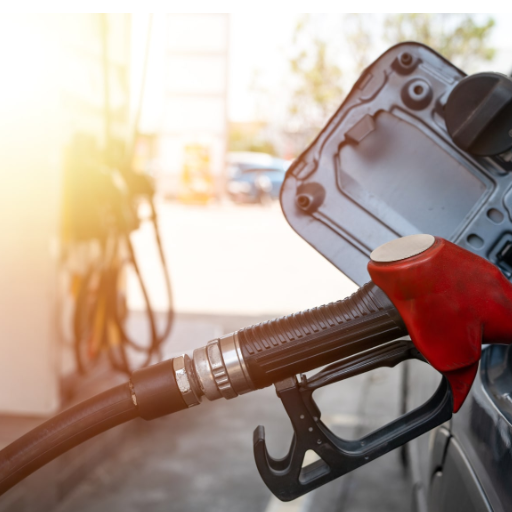
Safety is of utmost concern when dispensing petroleum to prevent accidents, fires, or environmental harm. Necessary precautions include switching off the ignition before fueling, not smoking, or having an open flame nearby. One way to do this is to ground the container to prevent the buildup of static electricity. Use only approved fuel containers and do not let the nozzle leave contact with the tank, or it could spill its contents. Try not to go back inside the vehicle once fueling has begun, as it can generate a static charge. Follow any posted safety instructions at the pump for a safe and secure refueling process.
Essential Safety Equipment and Gear
Proper safety equipment must be there, in case of accidents or to have it ready for emergency response. It includes a well-stocked first aid kit with bandages, antiseptic wipes, and adhesive tapes, not to forget the CPR mask. Every fire extinguisher must be rated for all fires (ABC) to ensure safety during unsuspected fires. Operators should have a reflective safety vest at hand, along with a pair of gloves and some cones, which could all prove to be lifesaving during breakdowns as they improve visibility and offer protection from hazards.
Other less critical but highly suggested items include a portable flashlight or headlamp with extra batteries, as power outages or low light conditions can occur anytime. Multi-tools or utility knives are handy for occasional repairs or emergencies, while safety goggles or glasses keep the eyes safe from flying objects. One must worry about chemical-resistant gloves and special gas masks against fuel or chemical handling exposure. Lastly, carry along a trusted means of communication, such as a satellite phone or an emergency radio, to keep you connected to those outside areas where the regular cell coverage stops.
Keeping this equipment at one’s beck and call, whether at home, inside the vehicle, or in the workplace, lulls dangers to rest and bestows inner confidence upon the mind under unanticipated conditions. Regularly inspecting the equipment and replacing outdated items ensures that the safety equipment remains competent and highly reliable.
Understanding the Risks and How to Reduce Them
Bears risk assessment to identify hazards and work on mitigation. The dangers from natural disasters, such as hurricanes, earthquakes, or wildfires, are significant. According to recent reports, from 2010 to 2020, an average of 147 million people were affected by natural disasters every year worldwide. Natural disasters cause interruptions to power, water supplies, and communication systems; thus, the need is for an emergency kit and evacuation plan.
Another significant common risk is health emergencies; pandemics, outbreaks of infectious diseases, and similar cases all fall under this umbrella. For instance, according to the WHO, maintain sanitation, apply masks, and ensure the availability of personal protective equipment (PPE) to reduce transmission risks. Several studies have demonstrated the importance of non-pharmaceutical interventions, such as social distancing and hygienic practices, in limiting the spread of diseases.
Another cyber-risk is a growing concern. Cybercrimes increased approximately 38% in 2022 compared to the previous year, so all-out vigilance is required today during online activity. Using strong passwords, two-factor authentication, and keeping software up-to-date can significantly reduce the chances of a breach.
Preparedness measures, such as familiarizing yourself with local hazards, staying up to date with weather alerts or other news from reliable sources, and practicing emergency drills, may reduce vulnerability. By staying proactive and constantly reviewing safety protocols, individuals and organizations will significantly improve their response capability against various risks.
Fire Prevention and Release Control Strategies
Suppose one wishes to minimize the incidence of fires. This entails prioritizing fire prevention and release control strategies, ensuring safety in residential and industrial setups. Top considerations include ensuring the use of fire detection systems, ensuring that inspections are carried out, and keeping all fire-related materials fire-resistant. Recent statistics indicate that fire-related deaths are reduced by about 87% upon equipping buildings with automatic sprinkler systems, and the systems also lessen property damages to the tune of about 69%. Hence, these systems and smoke detectors act as a compelling defense against potential fire hazards.
Another sphere of concern is the proper storage and handling of inflammable substances. Industries must appropriately store chemicals according to regulations approved by OSHA to avoid ignition. An ongoing learning program must be in place where employees are trained on fire safety issues, including evacuation procedures and fire extinguisher use. According to statistics, workplaces with employees engaged in fire-safety training recorded a 50% drop in injuries during fire incidents.
On the other hand, technologies like thermal imaging for early fire detection and IoT-enabled monitoring systems for real-time alerting and response times enhance the prevention mechanisms and emergency response immensely, thus ensuring life-saving and damage reduction whenever fire-related occurrences occur.
What Are the Regulations for Gasoline Dispensing?

Gasoline dispensing regulations are essentially directed toward safety and environmental protection. In particular, trading centres shall provide for proper storage and handling of gasoline to reduce any risk of fire, spill, or emission of pollutants; the dispensers should be provided with a vapor recovery system to abate air pollution, and employees must be duly trained in safe operating procedures. Precautionary safety signage should also be conspicuous, and the emergency shut-off for the gasoline dispenser must be tested and in working order. A license/certificate is not granted without violating local fire codes and environmental laws. Regular inspections will ensure these standards are maintained.
Compliance with Local and Federal Enforcement
Staying in line with local and federal enforcement laws remains crucial in matters of safety, protection of the environment, and business continuity. According to recent reports, fuel distribution or chemical handling industries must meet some rigid standards set by the EPA, OSHA, etc. The EPA, for instance, requires that low-emission technologies be used to reduce greenhouse gas emissions. On the other hand, OSHA sets forth application procedures for training workers and communicating hazards to guarantee fewer mishaps.
Regular audits and inspections should be conducted to verify compliance with the laws. Non-compliance penalties are reported to be in the thousands, sometimes even millions, depending on the gravity of the infringement, with the industries being placed under heavier scrutiny in recent times. They also encourage Environmental Management Systems (EMS) to be set up and digital monitoring systems to be employed so that a business can observe its compliance status in real time. Awareness of policy changes and nurturing a safety culture within their organizations are essential steps toward operating sustainably and legally.
Minimum Standards for Installation and Maintenance
Satisfying minimum standards for installation and maintenance is imperative for guaranteeing operational efficiency, safety, and compliance with stipulated regulations. A licensed or certified professional shall install all types of equipment and accessories per the equipment manufacturer’s instructions to maintain warranty and uphold the functions as intended under normal operating conditions. Electrical installations must comply with the NEC, and plumbing shall conform to local building codes to mitigate hazards and penalties.
Regarding maintenance, frequent checks and servicing are the mainstays for preventing breakdowns and prolonging system life. HVAC systems will have their filters changed every 1 to 3 months, depending on use, while a technician’s annual inspection will ensure adequate performance, thus further lowering power consumption by up to 15%. Likewise, predictive maintenance of industrial machinery, whereby faults are detected before failures through vibration analysis and thermal imaging, is becoming a best practice.
In addition, organizations ought to maintain documentation of each installation and maintenance activity. Such documentation, even on paper, ensures that the organization remains compliant on a regulatory level while allowing informed decisions about upgrades or replacements. Monitoring technologies and data-driven analytics embedded within a maintenance program can quickly enhance reliability and reduce downtime throughout operations.
Understanding Storage Tank Requirements
I focus on storage tank requirements such as capacity, construction materials, and regulatory compliance. The tank must be designed according to the specific requirements of the material to be stored, be it liquid, gas, or hazardous material. Environmental conditions, secondary containment considerations, and maintenance schedule considerations are all made on safety and efficiency grounds. By industry standards and through frequent inspections, I oversee and ensure that the storage tank remains reliable and meets all regulations imposed upon it.
How to Address Gas Tank Failures?
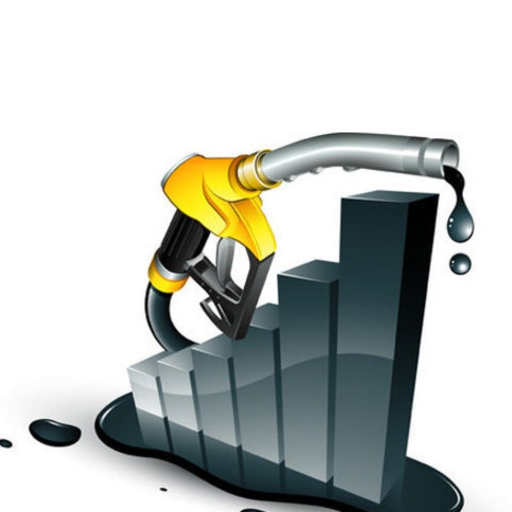
Conducting thorough inspections and testing to determine the root causes of gas tank failures is essential. If gas tanks are commonly affected by corrosion or leaks, or if there are weaknesses in their structure, a quick assessment should be administered. Then, they should be repaired or replaced with materials approved for the type of gas and in full adherence to safety standards. Future failures can be avoided by instituting routine maintenance procedures, including cleaning, pressure testing, and integrity evaluation of the tank itself. Training the personnel on emergency response and monitoring would also go a long way in mitigating the risks.
Common Causes of Failures in Gas Tanks
Several factors generally cause tank failures, with corrosion being among the most cited causes. If a metallic tank is continuously exposed to moisture, chemicals, or external environmental conditions, corrosion gradually occurs. Corrosion weakens the tank’s strength; however, the grievous factor is that it begins to leak.
Improper maintenance is another common cause; disregarding minor repairs during the early inspection phases could aggravate the problem and eventually lead to tank failure. In addition, a lack of pressure tests or improperly calibrated monitoring systems could be subtle sources of undetected weaknesses inside the tank.
Material defects or, more frequently, errors during fabrication contribute significantly to tank failures. This will often involve poor-quality materials or bad welding or assembly that create weaknesses in the tank. High manufacturing standards and vigorous testing of the tanks at production would be a way to address this risk. Addressing these causes pre-emptively will significantly help decrease the frequency of incidents and prolong gas tank life.
Immediate Actions to Take Post-Failure
Ensure Safety: First, make sure nobody is in harm’s way. Clear the site if you have to, and steer everyone far from the already gone wrong tank. If the air smells like gas, leave matches, sparks, and even your cellphone quiet so nothing suddenly lights up.
Shut Off Relevant Systems: Turn off any valves or supply lines tied to that tank. Stopping the flow now keeps the mess from mushrooming and buys you a little breathing room.
Contain Leaks or Spills: Grab the nearest absorbent pads or a spill kit and ring around the trouble before it walks away. A quick seal or a sand dam can bottle up the puddle, but pick the material that matches what you’re dealing with.
Contact Emergency Services: The second the site gets sketchy, let the fire crew or hazmat team know. Trained pros can assess the risks and bring the right gear so public safety doesn’t drag on a minute longer than it has to.
Document the Incident: Snap a few photos, jot down times, and ask witnesses for their side of the story while it all makes sense. That pile of notes and images will be the backbone for insurance forms, legal checks, and whatever steps you take to keep this from happening again.
Start a Deeper Look: After you’ve dealt with any urgent threat, take a hard look at what went wrong. Call in certified inspectors or mechanical engineers and ask them to study the tank up close. They’ll search for hidden design flaws, faulty materials, or skipped maintenance that might have triggered the failure.
Moving fast on this inquiry limits more damage and sharpens your chances of stopping a repeat problem in the future.
Preventive Measures for Future Failures
Stronger design standards, maintenance, and continuous monitoring systems should be used to prevent failures in storage tanks. API suggests that tanks be inspected regularly by API 653 to ensure they are always safe in structure and operation. Implementing NDT techniques, such as ultrasonic and radiographic testing, can detect faults inside before they evolve into more serious issues.
Another crucial safety feature is the use of advanced materials. Modern reinforced composites or corrosion-resistant alloys provide indefinite duration and protect against the adverse effects of the environment, such as moisture and chemical exposure. Data indicate that tanks built with corrosion-resistant alloys display a failure rate 30-40% less than those built with conventional steel components.
Another possibility to lower risks is innovative technologies such as IoT sensors and AI-powered monitoring systems. These systems monitor parameters such as pressure level, temperature, and leakage potential in real time, alerting any irregularities. An industrial case study showed about 25% fewer accidents in establishments with predictive maintenance based on IoT.
Finally, culture-building in safety awareness and training must be imparted to all personnel with proper maintenance scheduling, emergency protocols, and risk recognition. Adopting these approaches will increase safety, operational efficiency, and shelf life of storage tanks.
Reference Sources
Smart Fuel Dispenser Using RFID and IoT
Compressed Gas Aerosol Valve Design
Investigation of Knock in Gaseous Fuels
Frequently Asked Questions (FAQs)
Q: What is the definition of dispensing gasoline?
A: Dispensing gasoline refers to safely transferring gasoline from a storage tank at a gas station into a vehicle’s fuel tank using a pump system.
Q: What safety precautions should I take when dispensing gasoline at gas stations?
A: Ensure you turn off your vehicle’s engine, avoid using your phone, and do not smoke near the pump. Additionally, ground yourself to prevent static electricity and follow all posted safety instructions at the gas station.
Q: How do I know which gasoline to use for my vehicle?
A: Refer to your vehicle’s owner manual or check the inside of your fuel door for the recommended octane rating. Using the correct type of gasoline ensures optimal performance and engine health.
Q: What should I do if I accidentally spill gasoline while dispensing?
A: Immediately inform the gas station attendant and avoid starting your vehicle. Use absorbent materials, available at most gas stations, to clean small spills and follow any additional instructions given by the staff.
Q: How can I avoid overfilling the gas tank?
A: Listen for the pump’s automatic shut-off click, which indicates the tank is full. To prevent spills and overflow, avoid adding extra gasoline after this point.
Q: Are there any environmental concerns associated with dispensing gasoline?
A: Yes, gasoline vapors contribute to air pollution, and spills can contaminate soil and water. Properly using the pump and cleaning any spills helps minimize environmental impact.
Q: Can I use a mobile payment app at the gas station?
A: Many gas stations now offer mobile payment options via apps or contactless payments. Check with your local gas station for their available payment methods.
Q: What should I do if the gas pump is malfunctioning?
A: Report the issue to the gas station attendant immediately. Do not attempt to fix the pump yourself. The staff will ensure the pump is repaired and functioning safely.
Q: Why is it essential to use a gas pump nozzle correctly?
A: Correctly using the gas pump nozzle prevents spills, reduces vapor emissions, and ensures the safe transfer of gasoline into your vehicle’s tank.


